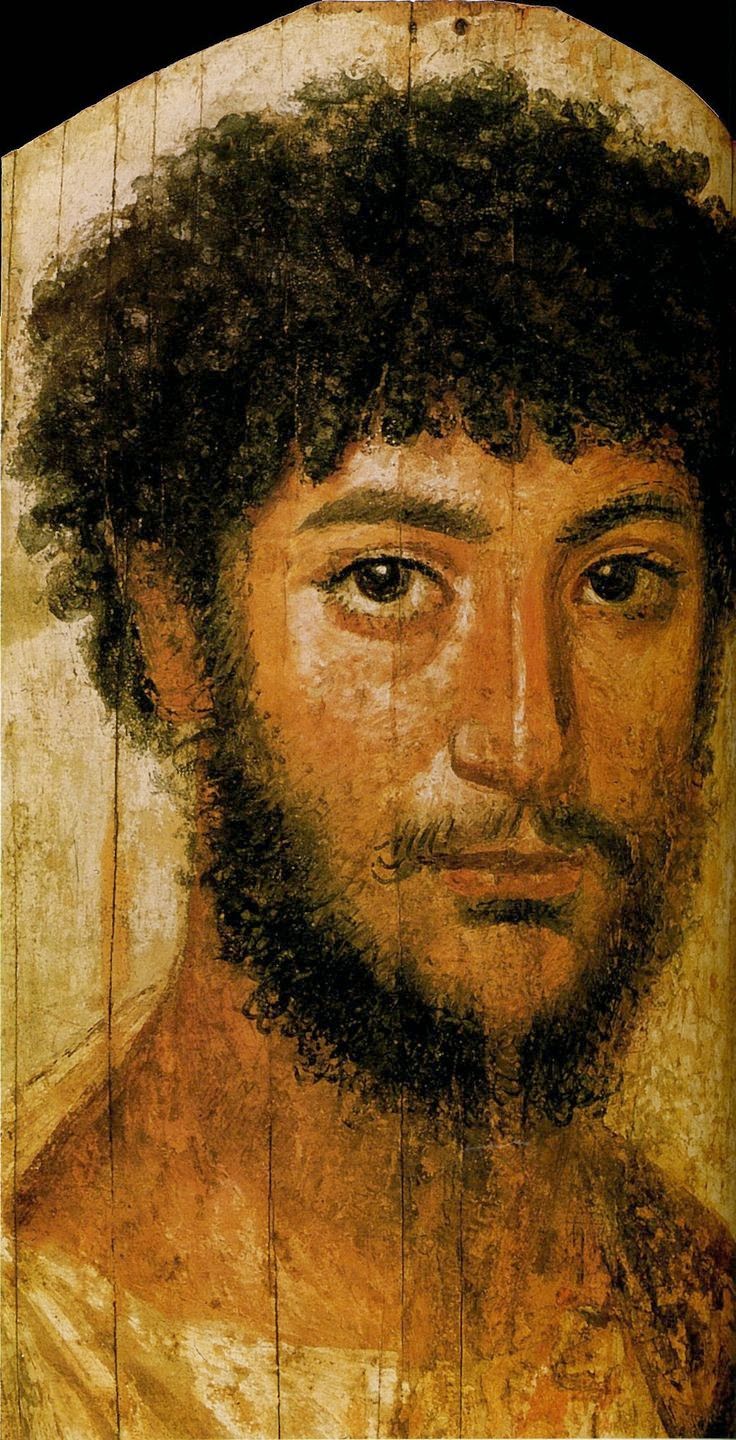Faiyum mummy portrait is the modern term given to a type of naturalistic painted funerary portrait from the Coptic period. These portraits have been found across Egypt, but are most common in the Faiyum Basin, particularly from Hawara and Antinoopolis, hence the common name. Dating from the Roman period - from the late 1st century BCE or the early 1st century CE onwards - and clearly deriving more from Greco-Roman traditions than from Egyptian ones, they belong to a tradition of panel painting, one of the most highly regarded forms of art in the Classical world; the Faiyum portraits are the only large body of work from that tradition to have survived to this day.
The portraits covered the faces of bodies that were mummified for burial; almost all have now been detached from the mummies. They usually depict a single person, showing the head, or head and upper chest. Two techniques were used - encaustic and tempera - though the former were of a generally higher quality. The majority of preserved mummy portraits were painted on thin rectangular panels made from different imported hardwoods. The finished panels were set into the layers of wrapping that enclosed the body, and were surrounded by bands of cloth giving the effect of a window-like opening through which the face of the deceased could be seen. Sometimes, though, portraits were painted directly onto the canvas or rags of the mummy wrapping.
About nine hundred of the portraits have been discovered; due the hot, dry Egyptian climate, they are frequently very well preserved, their brilliant colors seemingly unfaded.





















Am I a horrible person for thinking most of these men are hot?
ReplyDeleteOf course you are! But - that's - not the reason. ; )
DeleteNo, I think most of them are incredibly beautiful, too.